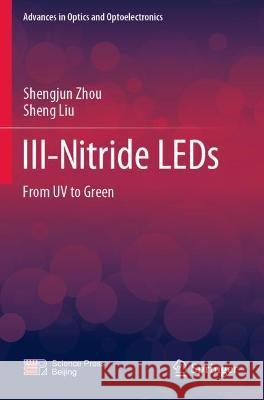III-Nitride LEDs » książka
topmenu
III-Nitride LEDs
ISBN-13: 9789811904387 / Angielski / Miękka / 2023
III-Nitride LEDs
ISBN-13: 9789811904387 / Angielski / Miękka / 2023
cena 464,01
(netto: 441,91 VAT: 5%)
Najniższa cena z 30 dni: 443,35
(netto: 441,91 VAT: 5%)
Najniższa cena z 30 dni: 443,35
Termin realizacji zamówienia:
ok. 22 dni roboczych
Bez gwarancji dostawy przed świętami
ok. 22 dni roboczych
Bez gwarancji dostawy przed świętami
Darmowa dostawa!
This book highlights state-of-the-art in III-nitrides-based light-emitting diodes (LEDs). Motivated by the application prospects in lighting, high-resolution display, and health & medicine, the book systematically introduces the physical fundamentals, epitaxial growth, and device fabrications of III-nitride-based LEDs. Important topics including the structures of chips, device reliability and measurements and the advances in mini and micro LEDs are also discussed. The book is completed with a decade of research experience of the author’s team in the design and fabrication of III-nitrides-based LEDs, presenting the novel achievements in the stress control of the large mismatch heterostructures, defect formation and inhibition mechanism of the heteroepitaxial growth, LED epitaxial technologies, and the fabrication of high-efficient flip-chip LEDs. The book comprises of a valuable reference source for researchers and professionals engaged in the research and development of III-nitrides-based LEDs.











